THE HISTORY OF ENGAGEMENT RINGS
Rings have been worn from time immemorial to mark major life events, and to commemorate special occasions. It seems only natural that a marriage proposal, which is undoubtedly one of life’s major events, is marked by the giving of an engagement ring. But this hasn’t always been the case. Where did this tradition begin, and how long have engagement rings been a symbol of betrothal? Continue reading for a brief history of engagement rings.
WHERE IT ALL BEGAN
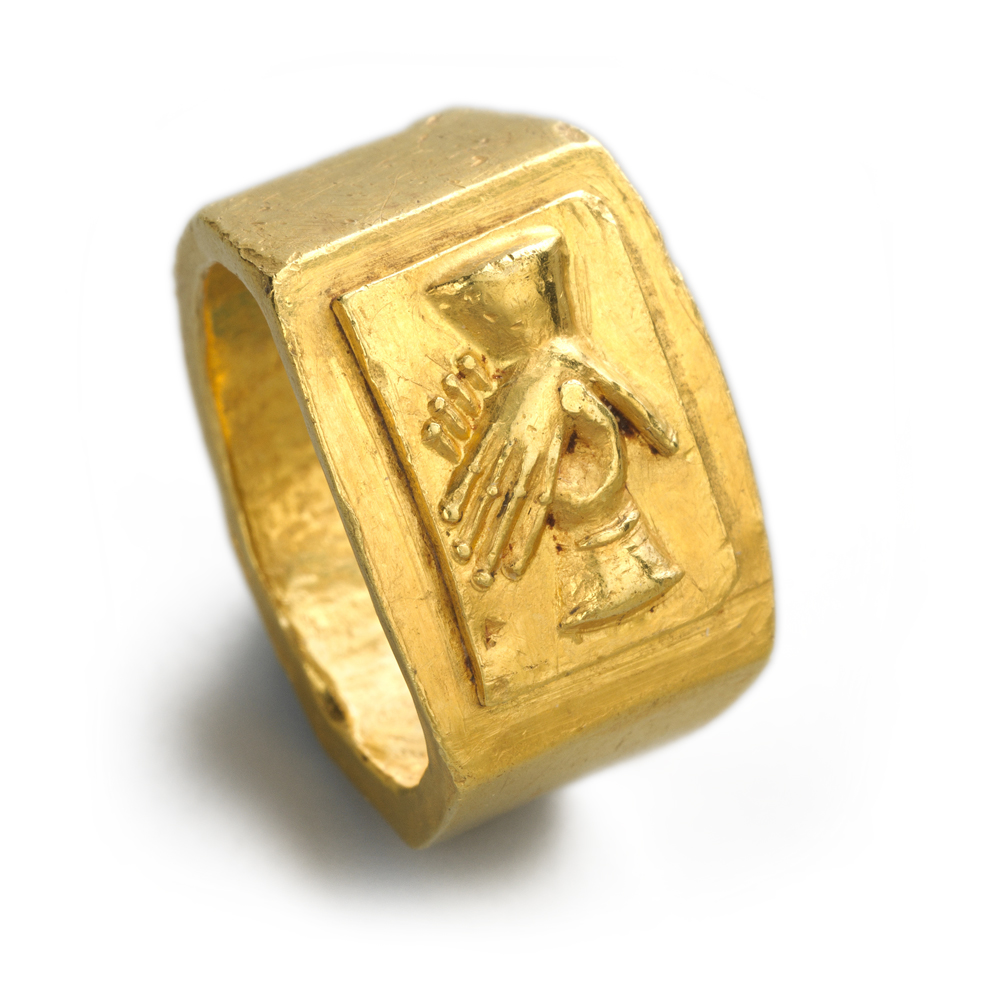
Ancient Roman Ring – From 3rd Century CE
The small size of the hoop suggests that it was given to a young fiancée or bride, but its weight implies that the couple was able to afford valuable pieces of gold jewelry. Source: The Met
Some online sources suggest that the tradition of engagement rings began in ancient Egypt. While this is possible, the history of engagement rings can only be reliably traced back to ancient Rome, where we have evidence by way of written accounts and archaeological finds.
Early Roman engagement rings were made of iron. For several centuries Roman citizens were allowed to wear only iron rings; the privilege of wearing gold rings was reserved for certain public officials. Eventually this right was extended to common citizens. However, many people continued to wear their gold ring only in public, and to switch back to their iron ring in private. During this time a woman might receive two engagement rings; a gold ring for public, and an iron ring for private.
The 5th century Roman writer Macrobius wrote that the engagement ring was worn on the fourth finger. Legend has it that the vena amoris, literally the “vein of love”, ran from the heart to the fourth finger of the left hand. Legend also has it that this is why we wear engagement and wedding rings on this finger.
Gemstones and fancy embellishments have been found in Roman rings of every age. This includes the famous Roman “fede rings” (pictured above) that were formed in the shape of two clasping hands, and which some scholars say were used exclusively as betrothal or wedding bands.
THE MIDDLE AGES AND THE FIRST DIAMOND ENGAGEMENT RING
The tradition of the engagement ring endured the fall of the Roman Empire. In the 7th century CE, the Visigothic Code stated: “that when the ceremony of betrothal has been performed … and the ring shall have been given or accepted as a pledge, although nothing may have been committed to writing, the promise shall, under no circumstances, be broken.”.
In 860 CE, Pope Nicholas I wrote to the Bulgarian monarch explaining to him that a Christian man gives his bride-to-be an engagement ring.
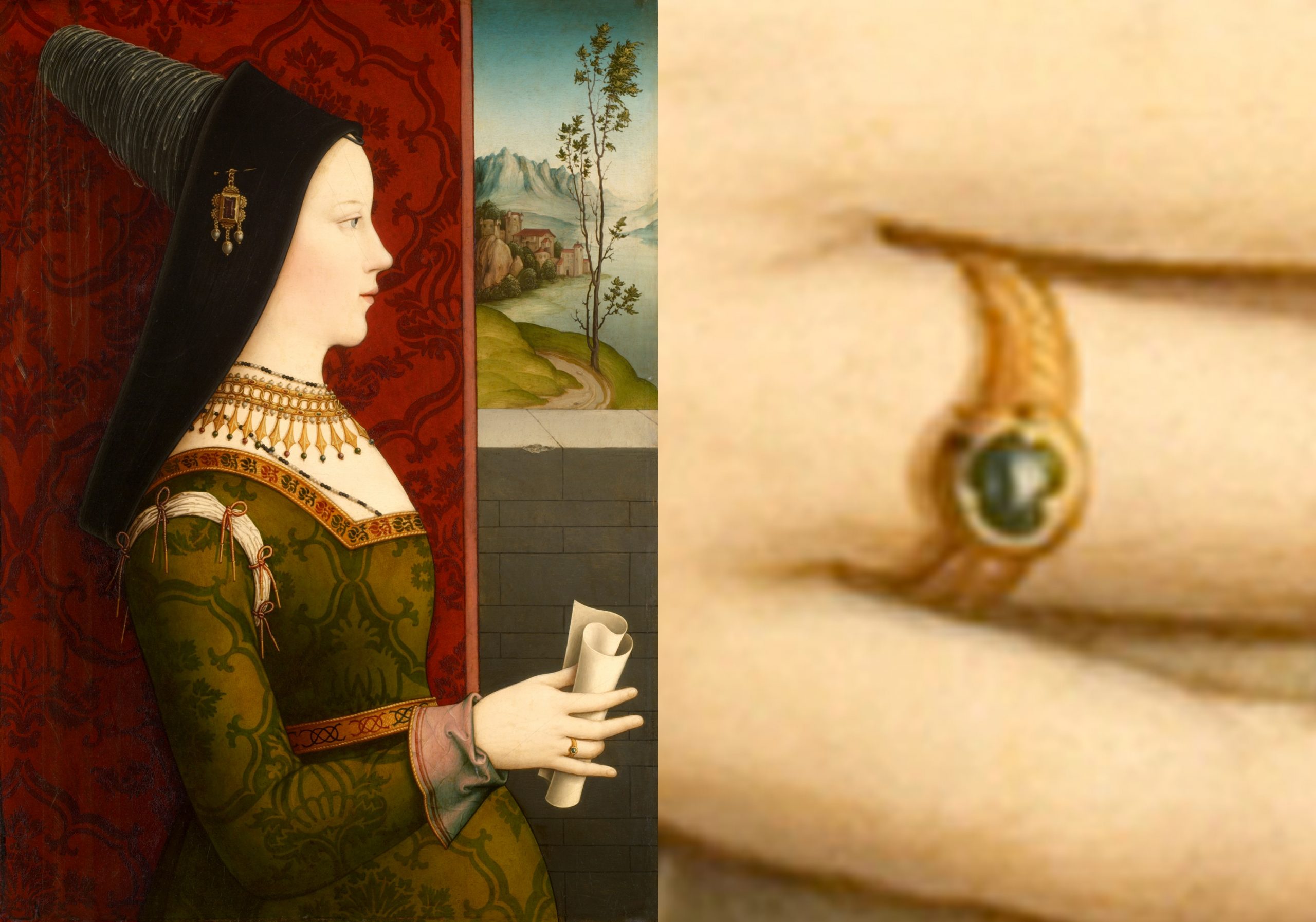
Mary of Burguny
The right image is a blown up section of Mary’s hand, sporting her diamond engagement ring.
Fast forward six centuries and we have the first well known account of a diamond set into an engagement ring. In 1477 the Austrian monarch Maximillian I presented his future wife, Mary of Burgundy, with a simple but elegant diamond engagement ring.
While there are a number of accounts of diamond engagement rings between then and now, diamonds remained quite rare until the late 19th century. It wasn’t until this time that diamond engagement rings became common place.
CLASPING HANDS AND ENGRAVED BANDS
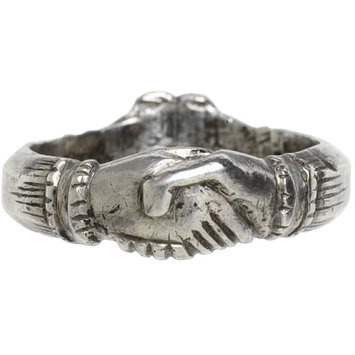
By the time of The Enlightenment, posie rings (rings with inscriptions engraved on the inside of the band) became popular. In the 12th century or so, fede rings made a comeback, and remained popular right into the years of The Enlightenment. Like their ancient Roman counterparts, these fede rings were often used as symbols of love and betrothal.
SOUTH AFRICAN DIAMONDS – “A DIAMOND IS FOREVER”
It wasn’t until the 1870s that diamonds began to flow onto the world market. At this time miners in South Africa hit pay dirt, discovering vast deposits. As diamonds became increasingly common, their price began to fall. In hopes of propping the price up, the owners of the South African mines decided to band together and form a single company: De Beers.
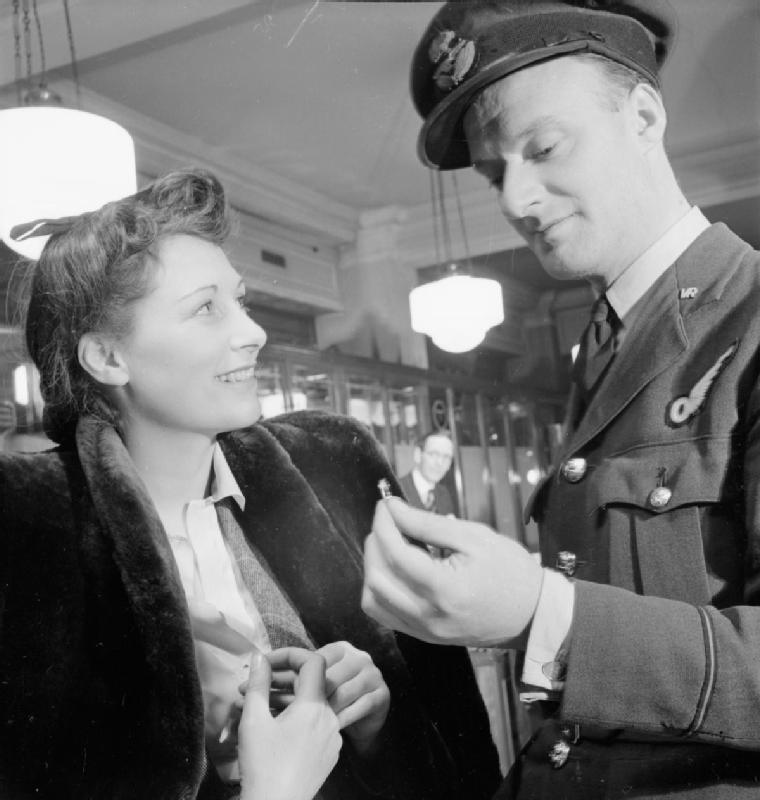
A couple browse diamond engagement rings at the height of WWII
De Beers is the company behind the famous marketing campaign “a diamond is forever”. In 1940 in the USA, only 10% of first-time brides received a diamond engagement ring. By 1990, that number jumped to 80%. So, engagement rings have been around for a very long time, but only recently have diamond engagement rings become the norm.
PRESENT DAY
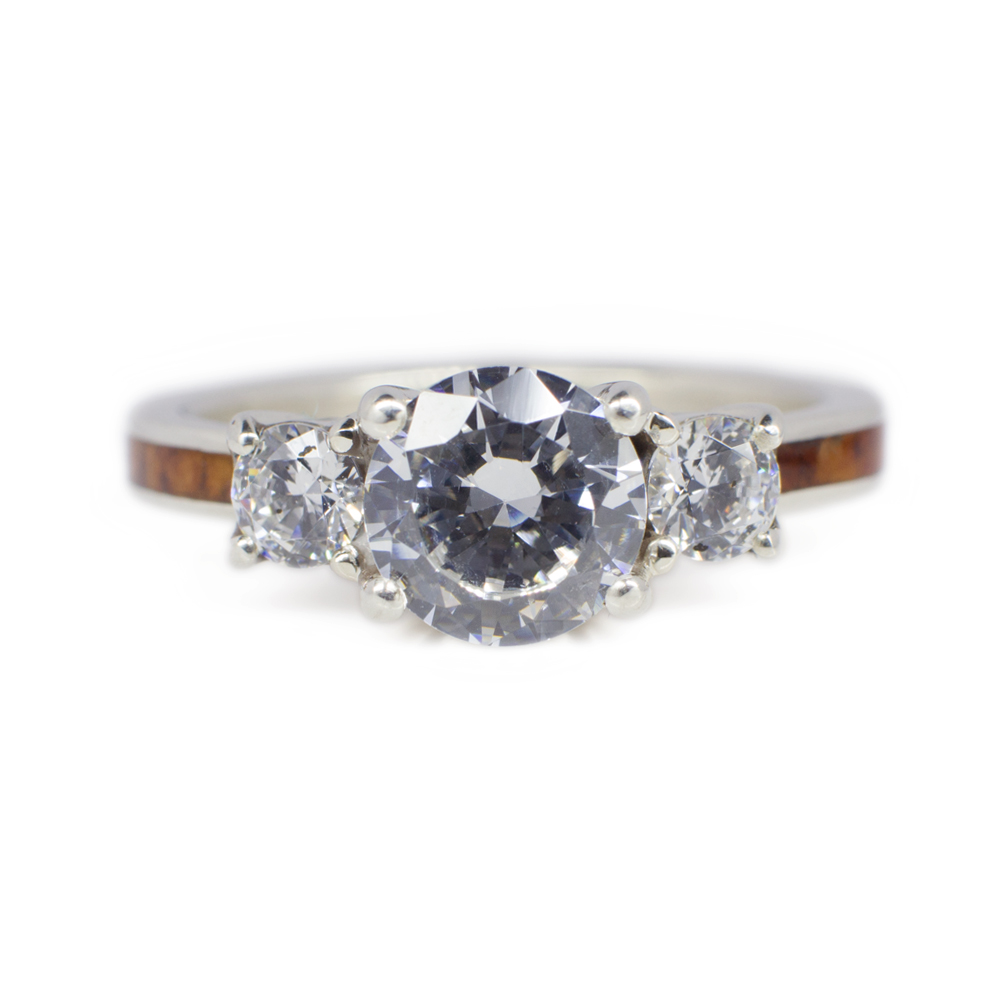
The history of engagement rings is rich, and the tradition is still going strong today. The rise of online shopping has given both men and women access to an enormous range of jewelry. It is increasingly common to find engagement rings in a variety of styles and stone types. Sapphire, topaz, aquamarine, and morganite are just some of the stones that are becoming popular. There are a lot more styles and stone types out there, so let’s see what tomorrow brings!

